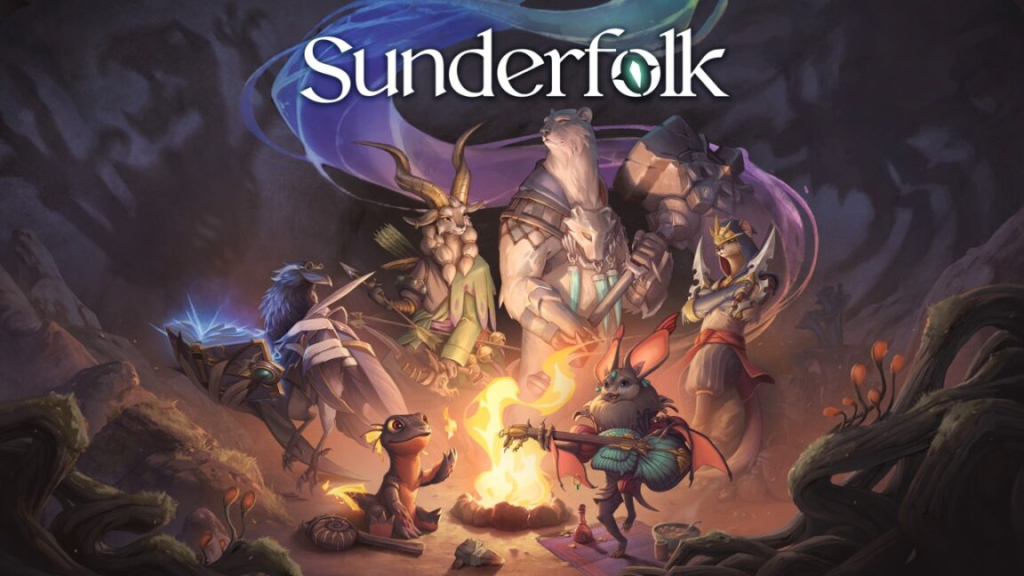The developers behind Sunderfolk aimed to create an engaging video game to help players “Rediscover game night.” Based on my experience, they have largely achieved that goal, as I find myself frequently engaged in lighthearted debates with friends about game strategies and decisions.
The camaraderie fostered during these gaming sessions can be hard to find as we age, settle into routines, and sometimes drift apart. I have facilitated four Sunderfolk play sessions with friends scattered across different states, and it has felt like resurrecting a cherished pastime. Sunderfolk showcases innovative ideas, particularly its ability to inspire friends to gather around planning hex tile movements, determining turn order, and even humorously naming the ogres who shoot arrows (“Pointy Bros”).
For those already managing a full schedule of gaming with friends, whether online or in-person, I recommend considering Sunderfolk as an exciting and low-pressure option. The game effectively introduces new players while gradually increasing its complexity. With only one person required to own the game across four players, and the need for just a smartphone for others, it offers a manageable setup that leads to rewarding gameplay experiences. Although there are areas for improvement, the fundamental mechanics and social aspects of the game feel robust.
Details
Developer: Secret Door
Publisher: Dreamhaven
Platform: PC (Steam), Xbox, PlayStation, Nintendo Switch (with iOS/Android controllers)
Release Date: April 23, 2025
Price: $50 (all platforms), only one copy needed per four players
Minimum specs: Intel Core i5-4590 or AMD Ryzen 3 4100, 8GB RAM, GeForce GTX 750 Ti (2GB) or Radeon RX 570 (8GB)
Links: Steam | Xbox | PlayStation | Switch | Official website
Choose Your Class and Join the Adventure
Sunderfolk is a turn-based tactical RPG that places players on a grid filled with various objects, foes, and surprises. Players can select from conventional RPG classes—my team included a rogue, a berserker, a wizard, and a unique pyromancer—and choose one ability card each turn. This setup emphasizes strategy involving turn order and positioning similar to Gloomhaven. For instance, my rogue can make a quick attack and gain strength by collecting gold or execute a sequence of move-and-attack actions while maintaining a defensive position.
All players view the same screen, whether it be on a living room television, a laptop, or through a stream on platforms like Zoom or Discord. As players choose their cards and plan movements, they interact using touchscreen controls on their smartphones or tablets. Upon completing quests by defeating enemies and accomplishing objectives, players return to town to engage in various maintenance activities. Sunderfolk accommodates players not present and allows flexible gameplay even if someone drops out in the midst of a battle.
Utilizing Mobile Controls
Now, let’s discuss the mobile controls—the key aspect that can require some adjustment. My friends needed a few minutes to familiarize themselves with using their phones as multi-functional controllers, including as a touchpad for movement and selection. After that initial learning curve, we encountered few issues regarding responsiveness, and the tactile feedback felt reliable throughout our sessions.
Although we occasionally faced confusion with the card selection process and the inherent difficulty of shifting attention between screens, the phone controls enabled everyone to settle in at their preferred spots: streaming through a TV, lounging on a tablet, or working at a kitchen counter. The mechanics proved beneficial not just for couch co-op scenarios, but also kept players engaged by indicating when someone had “disconnected” due to switching apps for too long, prompting group attention on whose turn it was.
(For clarification, the remote play functionality allows the game owner to stream their play session to services such as Discord or Zoom, where players can communicate. Joining the game is done using a QR code displayed on the screen.)
A Quirky World
Sunderfolk unfolds in a vibrant world filled with anthropomorphic animals, lush landscapes, and whimsical enemies reminiscent of the style seen in World of Warcraft. While back in the town hub, players interact with various NPCs to increase friendship levels, which can lead to rewards, and they can upgrade aspects of their shared environment. The town serves as a site for strategizing and strengthening social bonds among players, as resources collected during quests can be shared or spent collectively on unique enhancements.
However, I noticed some player dynamics during town interactions that felt familiar from more complex board games, such as differences in engagement speed. Some players may breeze through decision-making, while others appear more invested in dialogues, occasionally leading to moments of waiting. Players might use this time to stretch or grab refreshments, but some could need gentle reminders to keep the pace flowing smoothly.
The light-hearted, often comedic tone of Sunderfolk is suitable for a broad audience. The voice acting—mostly done by Anjali Bhimani (known for her role as Symmetra)—adds depth, evoking the feel of a game master switching roles. The narrative surrounding the ogres powered by Darkstone features just enough motivation to keep players engaged, despite my limited investment in the overarching storyline.
Naming Your Adventure
One of the engaging features of Sunderfolk is the opportunity for players to name elements throughout their adventure, a delightful technique reminiscent of savvy GMs who encourage player engagement. The game integrates secret prompts to encourage unique naming from players, offering chances to craft whimsical titles for various items and locations. In our campaign, we named healing statues as “Neatos,” the town’s bridge “Seagull Murder,” and a beetle we rescued after Michael Keaton. This element adds a layer of fun, allowing players to create a world that feels uniquely theirs.
The ability to manage phone controls permits some clever gameplay mechanics, assigning specific narratives or missions to chosen players. If Sunderfolk were to incorporate additional features of this nature, it would further enhance the experience.
Overall, my enjoyment of combat, difficulty scaling, and character development in Sunderfolk continues to grow. After multiple sessions, characters exhibit increased movement options, and the variety of items becomes more robust. The town of Arden, albeit chatty, presents more strategic opportunities for the players to explore. It feels like a game that has refined its pacing and onboarding well.
However, I do have a few critiques:
- Some beneficial upgrades in town are easily overlooked, such as tavern meals and temple fate cards.
- The variety of enemies in the first act feels somewhat limited.
- Decision-making on mission selection often requires unanimous agreement, which could be streamlined by allowing random selection if a consensus isn’t reached.
- A few players in my group have accidentally skipped attacks, despite prompts for confirmation.
- Movement indications could be clearer, as we’ve occasionally mismanaged hex placements.
Bringing Friends Together
It has been difficult to be overly critical of a game that has encouraged me to log off and reconnect with friends regularly. The minor drawbacks of Sunderfolk are largely akin to those found in traditional tabletop gaming: some waiting, uneven experience levels among players, and occasional distractions.
Ultimately, Sunderfolk achieves its goal of converting physical gameplay elements into a digital format that invites players to participate effortlessly. While it may not replace the traditional game night experience, it can encourage more participation and remind players of the joys of these gatherings.
This article was updated at 10:45 a.m. to clarify how remote play operates.






